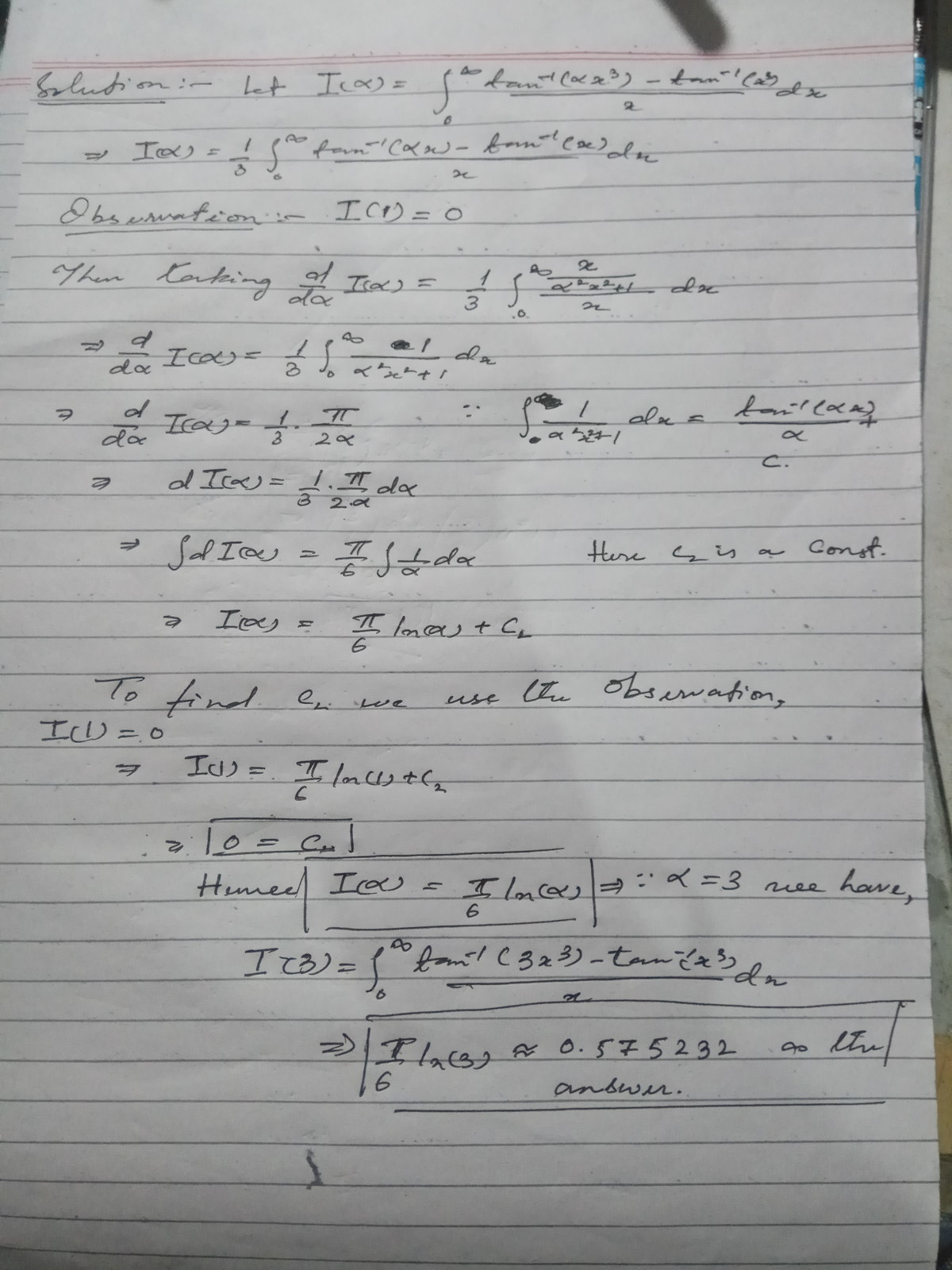the integration23
∫ 0 ∞ x tan − 1 ( 3 x 3 ) − tan − 1 ( x 3 ) d x = ?
The answer is 0.5752.
This section requires Javascript.
You are seeing this because something didn't load right. We suggest you, (a) try
refreshing the page, (b) enabling javascript if it is disabled on your browser and,
finally, (c)
loading the
non-javascript version of this page
. We're sorry about the hassle.
2 solutions
Mr.Chew please edit a=0 to a=1 or else ln(0)= ∞ .Minor mistakes are really cruel!
This is the first time I am using Feynman technique!!So if any error occurred please inform.
Log in to reply
The integral you get in the second line is known as Frullani Integral and so the problem is solved easily.
Whoa ! That was a huge simplification.

The integral can be solved using differentiation under the integral sign .
I ( a ) ∂ a ∂ I ( a ) ⟹ I ( a ) I ( 1 ) ⟹ I ( a ) = ∫ 0 ∞ x tan − 1 ( a x 3 ) − tan − 1 ( x 3 ) d x = ∫ 0 ∞ 1 + a 2 x 6 x 2 d x = 6 a 1 ∫ 0 ∞ 1 + u u − 2 1 d u = 6 a 1 B ( 2 1 , 2 1 ) = 6 a Γ ( 1 ) Γ 2 ( 2 1 ) = 6 a π = ∫ 6 a π d a = 6 π ln a + C = C = 0 = 6 π ln a Let u = a 2 x 6 ⟹ d u = 6 a 2 x 5 d x Beta function B ( m , n ) = ∫ 0 ∞ ( 1 + u ) m + n u m − 1 d u and B ( m , n ) = Γ ( m + n ) Γ ( m ) Γ ( n ) and Γ ( 2 1 ) = π where C is the constant of integration.
Therefore ∫ 0 ∞ x tan − 1 ( 3 x 3 ) − tan − 1 ( x 3 ) d x = I ( 3 ) = 6 π ln 3 ≈ 0 . 5 7 5 .
References: